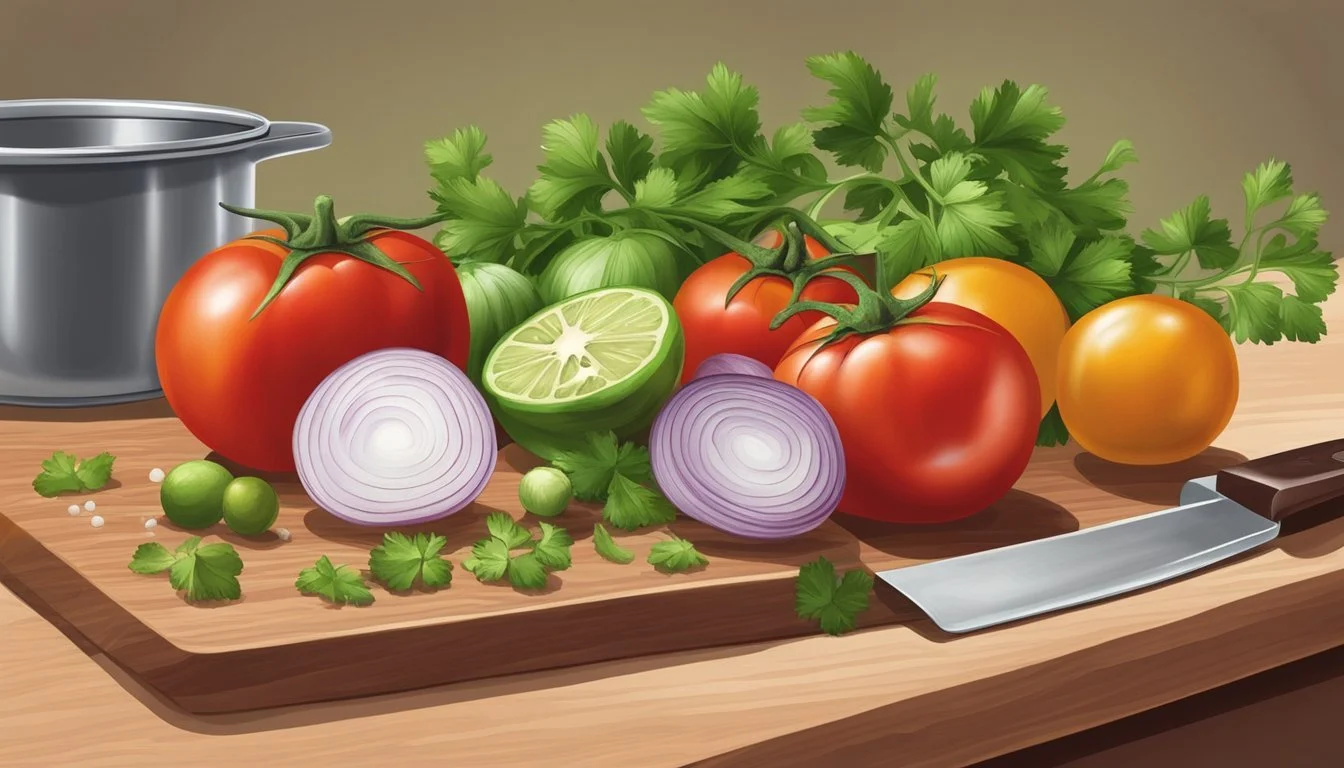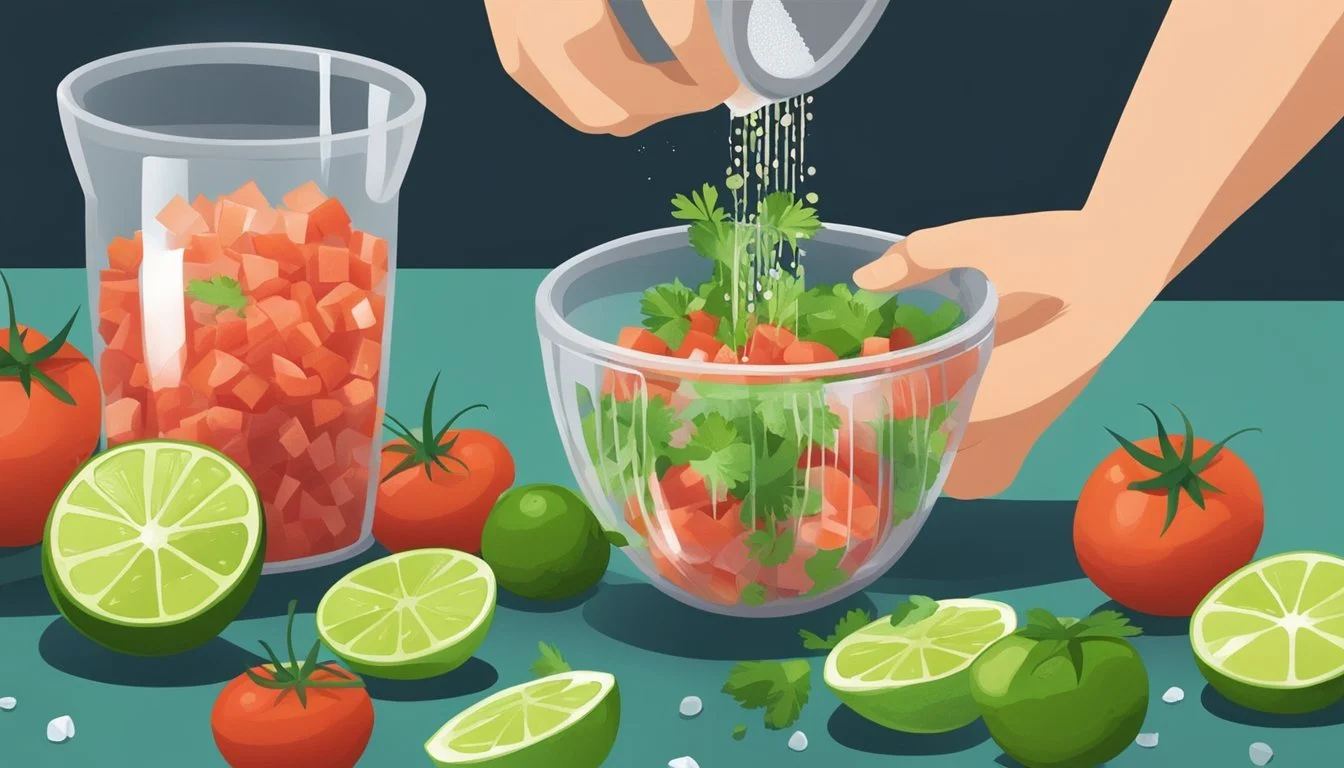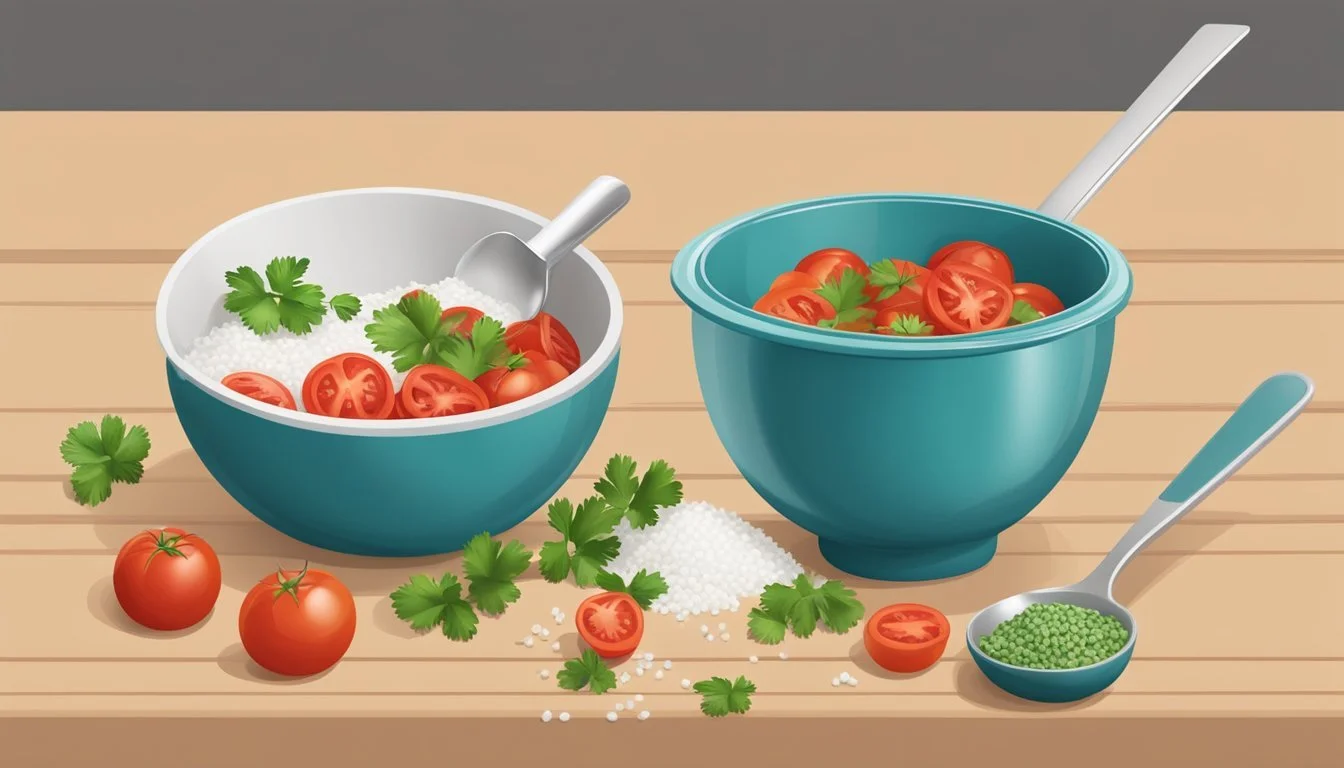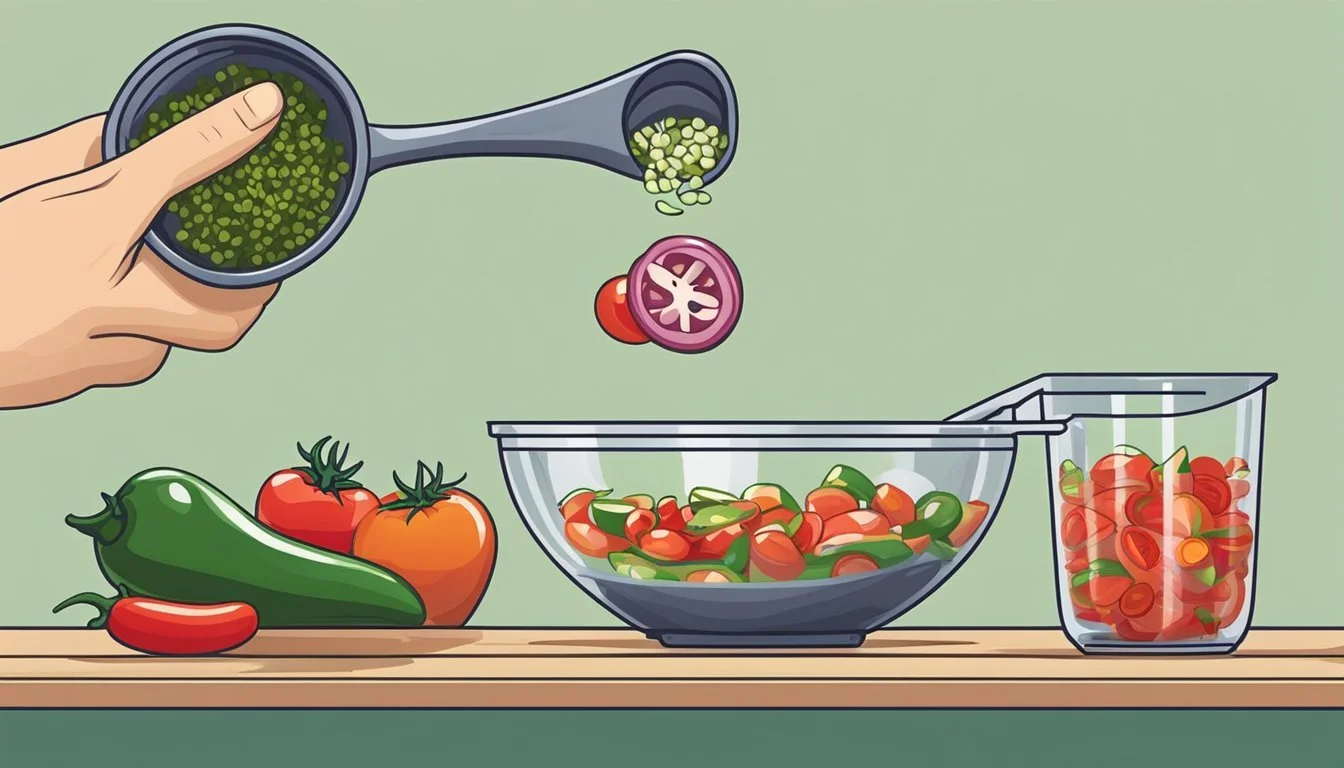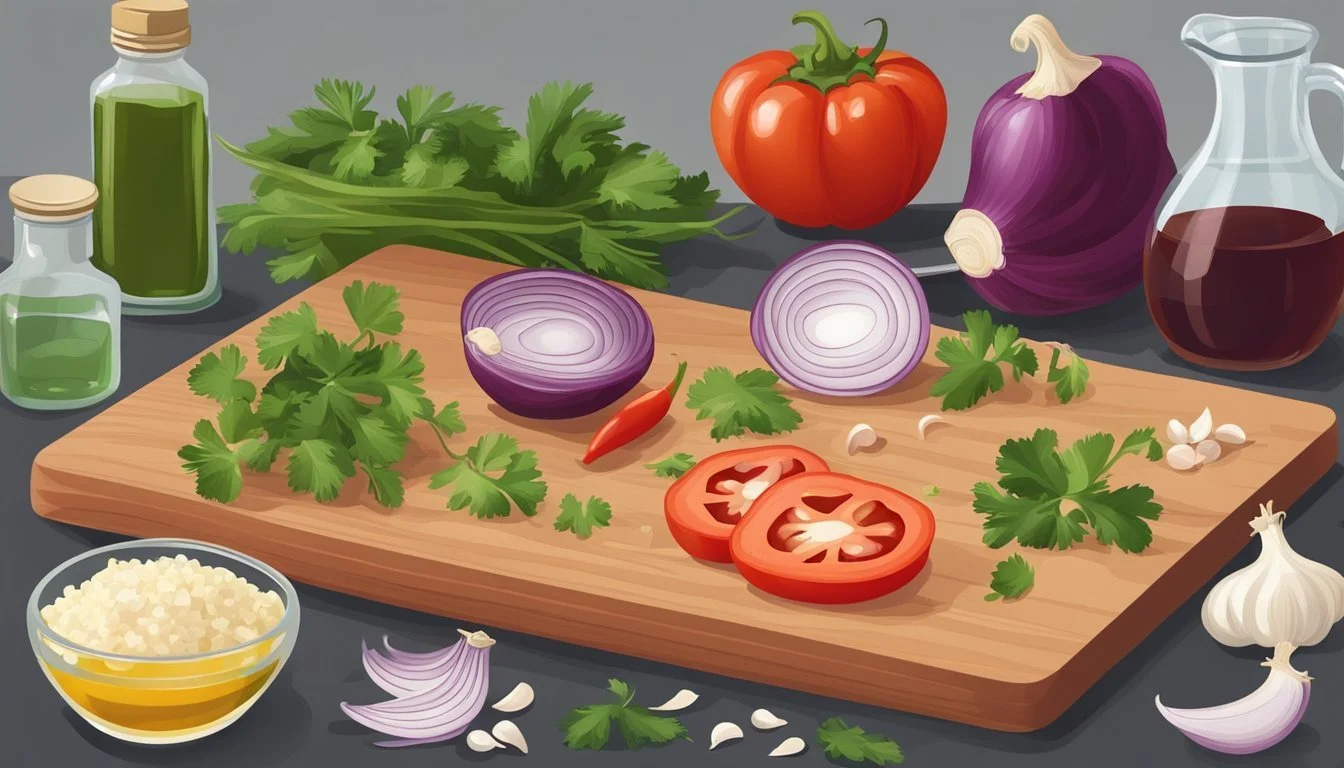How to Measure Ingredients Accurately for Perfect Homemade Salsa
Creating homemade salsa is a delightful way to bring fresh flavors to the table. The key to a great salsa recipe lies in the precision of measuring ingredients, which ensures a well-balanced blend of tartness, heat, and savoriness. Whether one prefers a chunky texture or a smoother consistency, understanding the proper proportions of tomatoes (What wine goes well with tomatoes?), onions, (What wine goes well with onions?) chili peppers, and spices is fundamental.
Accurate measurements play a crucial role in the crafting of homemade salsa. They take the guesswork out of the process and provide the foundation for the recipe, allowing for a consistently delicious outcome with each batch prepared. The simplicity of salsa doesn't diminish the importance of attention to detail when it comes to ingredient ratios, as even a slight deviation can impact the overall flavor profile.
In the preparation of a salsa recipe, each ingredient contributes its own unique characteristics. Tomatoes offer juiciness and a slightly sweet canvas; onions introduce a sharp depth; chili peppers inject heat and zest; while cilantro and lime juice tie all the flavors together with a bright freshness. Measuring these ingredients with care ensures that every spoonful is harmonious, with each component distinctly present but working in concert.
Selecting the Right Ingredients
The foundation of a vibrant and flavorful homemade salsa lies in the careful selection of fresh, quality ingredients. Choosing the proper variety and combining them correctly is vital to achieving the desired taste and texture.
Choosing Tomatoes
When selecting tomatoes for salsa, one must consider texture and acidity. Roma tomatoes and plum tomatoes are excellent for salsa due to their firm flesh and lower water content, which helps prevent a watery consistency. For canned options, one should seek out high-quality canned tomatoes, which can provide a rich and concentrated flavor, especially when fresh tomatoes aren't at their peak. Those with access to garden tomatoes may use them for a burst of fresh, homegrown taste.
The Role of Onion and Garlic
Onions are a cornerstone in creating the salsa's base flavor. Yellow onions offer a robust flavor, while red onions provide a milder taste with a hint of sweetness. White onions, commonly used in traditional Mexican cuisine, blend a sharp yet balanced flavor. As for garlic, fresh is best. One or two finely minced garlic cloves should be enough to infuse the salsa with a pungent, earthy undertone that complements the other ingredients without overpowering them.
Incorporating Cilantro and Lime
Cilantro brings a fresh, citrusy profile that brightens the salsa. Use the leaves and tender stems, finely chopped, for the best texture and flavor. Lime juice is critical for its acidity, which helps balance the sweetness of the tomatoes and onions. Fresh lime juice is preferred over lemon for its authenticity and zesty kick. The quantity can be adjusted according to personal preference, but one should start with the juice of one lime to ensure the flavors meld harmoniously.
Prepping the Ingredients
Precise preparation of ingredients is critical for a perfect homemade salsa. This includes proper dicing, chopping, and measuring of fresh and simple ingredients like tomatoes and herbs to ensure a consistent flavor in every batch.
Dicing and Chopping
For diced tomatoes and other ingredients like onions, peppers, and cilantro, it is important to use a sharp knife for clean cuts. The size of the chop should be uniform for even distribution of flavors. Vegetables like tomatoes should be diced into small, bite-size pieces, while herbs such as cilantro are finely chopped to release their aromatic oils.
Tomatoes:
Roma or plum tomatoes are often preferred for their firmness and lower moisture content.
Dicing should result in pieces about 1/4 inch to 1/2 inch in size.
Onions and Peppers:
Peel onions before chopping.
For peppers, remove the seeds and stem before dicing to reduce heat and improve texture.
Measuring Techniques
Accurate measurements ensure the balance of flavors. Use measuring spoons for small amounts of ingredients like salt or spices, and measuring cups for larger quantities such as tomatoes and onions. When using fresh ingredients, a kitchen scale can also provide precise weights, which is especially helpful for consistent results in recipes that need to be scaled up.
Herbs and Spices: Always measure after chopping.
Tomatoes: One cup of diced tomatoes is roughly equivalent to one large tomato.
Liquids: Lime juice and oils should be measured using a liquid measuring cup for accuracy.
Assembling the Salsa
In crafting a homemade salsa, precision in combining ingredients is just as crucial as the freshness of those ingredients. The process involves decisions on mixing methods, spice levels, and taste refinement to ensure a perfect blend of flavors.
Hand Mixing vs. Food Processor
Hand Mixing: The traditional approach for assembling salsa requires dicing and combining the ingredients by hand. This method gives the maker control over the texture, resulting in a chunkier salsa with discernible pieces of tomatoes, onions, and jalapeños.
Pros: Customizable texture; no electrical equipment needed.
Cons: Time-consuming; inconsistent chopping.
Food Processor: For a smoother salsa, many opt for a food processor. Start by pulsing ingredients like onions, jalapeno peppers, and garlic until they are finely chopped. Then, add tomatoes, green chiles, and pulse a few times to achieve the desired consistency.
Pros: Quick preparation; uniform consistency.
Cons: Easy to overprocess; less texture control.
Seasoning and Spice Adjustment
Seasoning plays a vital role in salsa flavor. Begin with a base of salt and then add ground cumin for depth. Introduce sugar if a balance is needed against the acid from tomatoes or lime juice. For heat, adjust the amount of jalapeños and whether jalapeño seeds are included based on personal spice tolerance.
Salt: Start with a small amount and adjust as necessary.
Cumin: A pinch can greatly enhance the depth of flavor.
Sugar: Optional, to offset acidity.
Jalapeños: Include seeds for more heat, remove for a milder salsa.
Taste Testing and Refinement
The art of perfecting salsa involves frequent taste tests. After initial mixing, let the salsa sit to allow flavors to meld, then taste and adjust. One must look for a balance of spice, acid, and seasonings, and consider how the flavors might change once the salsa is chilled or has rested for a few hours.
Initial Taste: Check for flavor balance and seasoning.
Refinement: Make small adjustments if necessary.
Resting Salsa: Flavors develop over time; a second taste test may be required.
Achieving the Desired Texture
When crafting homemade salsa, texture is a crucial component that can make or break the final result. The desired consistency—whether smooth or chunky—can be achieved through controlled blending or chopping.
For a chunky texture, one should coarsely chop the ingredients by hand or use the pulse function sparingly if opting for a food processor. They should combine fresh ingredients like tomatoes, onions, and peppers in a sequence that maintains the integrity of each component.
Alternatively, for a smoother texture reminiscent of restaurant-style salsa, blending the ingredients continuously until they are thoroughly pureed is recommended. Here, using a blender or food processor on a steady setting will help achieve a uniform consistency.
Here's a quick guide on achieving your preferred salsa texture:
For Chunky Salsa:
Hand Chopping: Dice ingredients evenly for a rustic feel.
Food Processor: Use brief pulses to control the size of the chunks.
For Smooth Salsa:
Blending: Puree all the ingredients until well combined and silky.
Food Processor: Blend continuously, checking until the desired smoothness is reached.
Incorporating fresh salsa ingredients with careful attention to the method of combining will ensure the texture is tailored to suit anyone’s preference. They should always taste test and adjust accordingly, as the ripeness of tomatoes or the water content can affect the salsa's consistency. The key is to handle the ingredients thoughtfully and to blend or chop with intention, keeping a close eye on the transformation within the blender or food processor.
Storing and Preserving Salsa
Preserving the freshness and flavor of homemade salsa requires attention to storage methods. Proper technique is crucial to maintain both safety and taste.
Refrigeration Recommendations
When one stores salsa in the refrigerator, it should be kept in an airtight container. This minimizes exposure to air that can lead to spoilage. Ideally, the salsa should be consumed within 5 to 7 days. Here's a quick guide:
Immediately after preparation: Allow the salsa to cool to room temperature.
Transfer: Move the salsa into an airtight container, leaving some space at the top to account for expansion.
Seal: Ensure a tight seal to keep out bacteria and air.
Refrigerate: Place the sealed container in the refrigerator, maintaining a temperature below 40°F.
Canning and Long-Term Storage
To preserve salsa over a longer period, canning is a reliable method. The use of a boiling water bath canner for acidic foods like tomatoes and fruits is common, but when adding low-acid ingredients such as onions or peppers, the pH balance changes. This might necessitate pressure canning to ensure safety.
Mason jars are a preferred option for canning salsa.
Preparation: Sterilize mason jars and prepare them by preheating.
Filling: Pour hot salsa into jars, leaving appropriate headspace.
Sealing: Apply lids and tighten rings; process in a canner according to a tested recipe's specified time.
Storage:
Environment Conditions Pantry Cool and dry, 50°F-70°F Canner Boiling water bath or atmospheric steam
Note: Always refer to a scientifically tested recipe for exact processing times. Unsealed jars or any showing signs of spoilage should be refrigerated and consumed quickly.
Serving Suggestions
Homemade salsa elevates a variety of dishes and snacks with its vibrant flavors. Whether used as a dip or a condiment, its versatility shines across the culinary spectrum from casual snacking to formal meals.
Pairing with Snacks
Salsa pairs exceptionally well with snacks where the flavors can truly stand out. For a classic experience, one can never go wrong with tortilla chips as a conduit for this zesty accompaniment. Other snacks include:
Nachos: Layer with cheese, beans, and a generous scoop of salsa.
Quesadillas: Add a dollop inside for moisture and spice.
Taco Salad: Use salsa as a dressing for a lighter option.
Cowboy Caviar: Mix salsa with beans and corn for a hearty dip.
Chip Dipping: Serve alongside guacamole, pico de gallo, and spicy restaurant-style salsas.
Incorporating into Meals
Salsa also finds its place in enhancing meals, bringing a fresh element to various dishes:
Tacos/Burritos: Spoon over fillings for a burst of flavor.
Breakfast Tacos/Burritos: Combine with eggs for a lively breakfast option.
Grilled Meat: Use as a topping for a lively contrast in flavors.
Mango/Peach Salsa: Ideal with seafood for a sweet heat twist.
Roasted Salsa: A robust option for richer dishes.
Breakfast Quesadillas: Incorporate it for a zingy morning kick.
Enhancing Flavor over Time
When perfecting a homemade salsa recipe, one key element is allowing the ingredients to meld, enhancing the vibrant flavor. The salsa's taste evolves as the acids, salts, and natural juices work their magic.
Initial Resting Period: After combining the salsa ingredients, it is crucial for the mixture to rest. The onions, for example, benefit from a half-hour soak in lime juice, which tames their pungency and infuses the citrus flavor.
Let It Sit: A minimum of 30 minutes is recommended, although several hours to overnight can yield even more complexity. This waiting period ensures that the flavors marry effectively.
Tips for Optimizing Flavor Development:
After the initial onion and lime juice soak, add the tomatoes, cilantro, and jalapeños.
Cover and place the salsa in the refrigerator; the cold slows down spoilage while giving time for flavors to integrate.
Avoid over-processing; aim for a texture that allows each ingredient to stand out, yet contributes to the overall taste.
Table: Resting Time vs. Flavor Depth
Resting Time Expected Flavor Outcome 30 minutes Bright, fresh flavor; ideal for immediate serving. 2-4 hours More mellow flavors; ingredients begin to combine. Overnight (8-12 hours) Robust, melded flavors; optimal depth and richness.
By respecting the resting time, cooks unlock the full potential of their salsa, achieving a vibrant flavor that enhances any dish. Remember, patience is often the secret ingredient in crafting the perfect salsa.
Tools and Equipment
When preparing homemade salsa, having the right tools and equipment can streamline the process and affect the outcome's consistency and flavor. Below is a list of essential equipment one will need.
Measuring Tools:
Measuring cups and spoons: For precise ingredient quantities.
Blending Equipment:
Blender or Food Processor: Essential for combining ingredients to the desired texture, whether chunky or smooth. The blender's pulse function is particularly useful for controlling consistency.
Kitchen Equipment Purpose Blender/Food Processor Blends ingredients to desired consistency. Measuring Cups & Spoons Ensures accurate ingredient portions. Knives Chops fresh produce for the salsa. Cutting Board A hygienic surface for slicing ingredients.
Canning Supplies (Optional): If one intends to preserve the salsa for long-term storage, canning supplies become necessary.
Mason Jars: A popular choice for canning, these glass jars ensure a tight seal.
Canning Funnel: Helps in transferring salsa into jars without spillage.
Lids and Bands: Necessary to secure the salsa within the jars for proper preserving.
Miscellaneous:
Spatulas or Wooden Spoons: Useful for mixing ingredients and transferring salsa.
Rubber Gloves: Recommended when handling spicy peppers to prevent skin irritation.
Note: Always pre-clean all equipment to maintain hygiene and avoid flavor contamination. For longer shelf life, proper canning techniques should be followed, ensuring that mason jars are sterilized before use.
Seasonal and Fresh Options
When making homemade salsa, incorporating fresh and seasonal ingredients will significantly enhance the flavor. During summer, the abundance of fresh produce offers a great opportunity to utilize garden-fresh tomatoes, which are a cornerstone of any salsa recipe. The intense sun and warmth of the season ripen tomatoes, giving them a sweeter, more robust taste compared to their off-season counterparts.
Garden-grown tomatoes have the advantage of being picked at their peak ripeness, which ensures the best possible flavor for salsa. However, if one does not have access to a home garden, a trip to the local farmer's market can provide a similarly fresh option. These markets often feature a variety of tomato breeds, each contributing unique flavors and textures to a salsa.
Ingredients to Look for at the Farmer's Market:
Tomatoes: Heirloom, Roma, and cherry tomatoes are perfect for salsa.
Peppers: Choose based on the desired heat level; jalapeños for mild, serranos for medium, and habaneros for hot salsas.
Onions: Fresh onions add a crisp bite; options include red, white, or sweet varieties.
Cilantro: Bright and aromatic, fresh cilantro leaves are a key component.
Lime: Fresh lime juice not only adds zing but also helps in preserving the salsa.
Taking advantage of seasonal produce not only supports local agriculture but also ensures that the salsa has the brightest flavors possible. When selecting ingredients, one should look for vibrant colors, firm textures, and an aroma indicative of freshness. Fresh ingredients can vary in taste, so it is always recommended to taste and adjust the seasoning of the salsa as needed.
Advanced Tips and Variations
When crafting a homemade salsa, one can elevate their culinary creation by incorporating roasted ingredients, experimenting with fruit, and developing a signature blend. These advanced tips and variations can transform a simple salsa into a gourmet condiment worthy of any Mexican restaurant or gourmet home kitchen.
Making Roasted Salsa
For those seeking a smoky flavor profile in their salsa, roasting vegetables is key. To create a roasted salsa, one should:
Ingredients: Use ripe tomatoes, fresh peppers, onions, and garlic.
Method:
Preheat the oven to 425°F (220°C).
Drizzle vegetables with olive oil and season with salt; then roast until charred, about 25-30 minutes.
Blend roasted vegetables to desired consistency, adjust seasoning to taste.
Roasting intensifies the sweetness of tomatoes and adds depth to the salsa, particularly well-suited for pairing with grilled chicken or enhancing a burrito bowl.
Exploring Fruit Salsas
Fruit salsas present a balance of sweetness and acidity, creating an unexpectedly delicious salsa recipe. To experiment with fruit salsas:
Recommended Fruits: Mangoes, pineapples, or peaches.
Preparation:
Dice the fruit and combine with finely chopped chilies, onions, and a squeeze of lime juice.
Incorporate specialty ingredients like chopped mint or a splash of coconut water for an exotic twist.
Such salsas are exceptional with seafood dishes (What wine goes well with seafood dishes?) or as a vibrant topping on scrambled eggs.
Creating a Unique Blend
Crafting the best homemade salsa recipe involves personalizing the blend. Here's how to create an original and easy salsa recipe:
Choose Base Ingredients: Start with fresh ingredients such as ripe tomatoes and aromatic herbs like cilantro.
Add Heat: Include various types of peppers for a spicy kick—jalapeños for moderate heat or habaneros for an intense burn.
Customize: Consider other unique additions, such as roasted nuts or seeds, to provide an earthy undertone.
This tailored approach allows one to adjust the flavor, heat, and texture, resulting in a salsa that's perfect for their individual palate, whether it's a fresh salsa for dipping chips or a robust condiment for enhancing main dishes.
Utilizing Leftovers
When crafting a homemade salsa, one may often find themselves with excess ingredients. Leftovers can be ingeniously repurposed to ensure both the delight of variety in your meals and the practice of producing minimal waste.
Vegetables: Extra tomatoes, onions, and peppers can easily be incorporated into the next day's breakfast omelet or lunchtime sandwiches. It can also be diced or sliced to enhance a fresh garden salad. Keeping the vegetables chilled and properly stored in the refrigerator maximizes their shelf life.
Herbs: Leftover cilantro and other herbs add a fresh burst of flavor to various dishes such as soups, stews, and marinades.
Leftover Ingredient Storage Recommendation Possible Uses Tomatoes Refrigerate Salads, sauces Onions Cool, dry place Stir-fries Cilantro Refrigerated in a jar Garnishes Jalapeños Refrigerate Spicy dishes (What wine goes well with spicy dishes?) Lime juice Refrigerate Beverages
Seasonings: Any unused lime juice is an excellent addition to homemade dressings or can be used to brighten up a glass of water. Salt and pepper, of course, are pantry staples that will easily find their way into countless future kitchen endeavors.
To embrace a sustainable approach, individuals can also consider composting any inedible parts of the vegetables. This leads to a beneficial cycle, turning what would be waste into nutrient-rich compost for gardening purposes.
In essence, one should see leftovers not as an inconvenience but as a creative culinary opportunity. With a bit of ingenuity, food waste can be significantly minimized.

